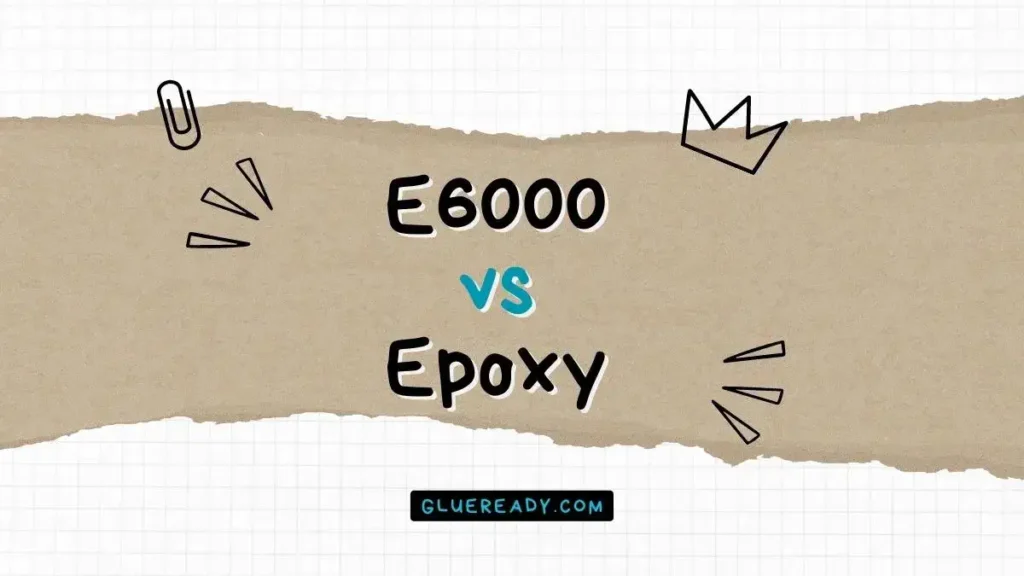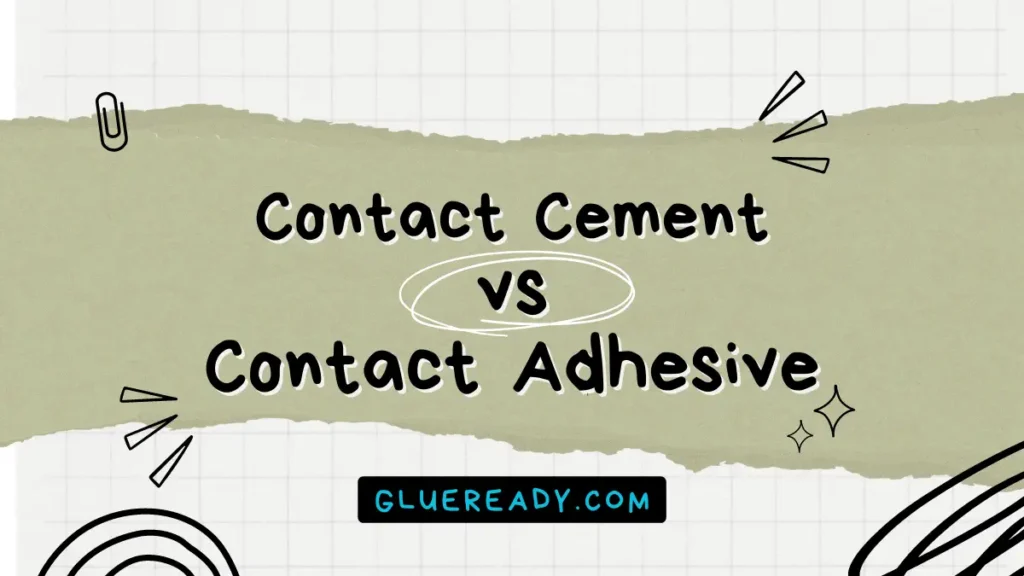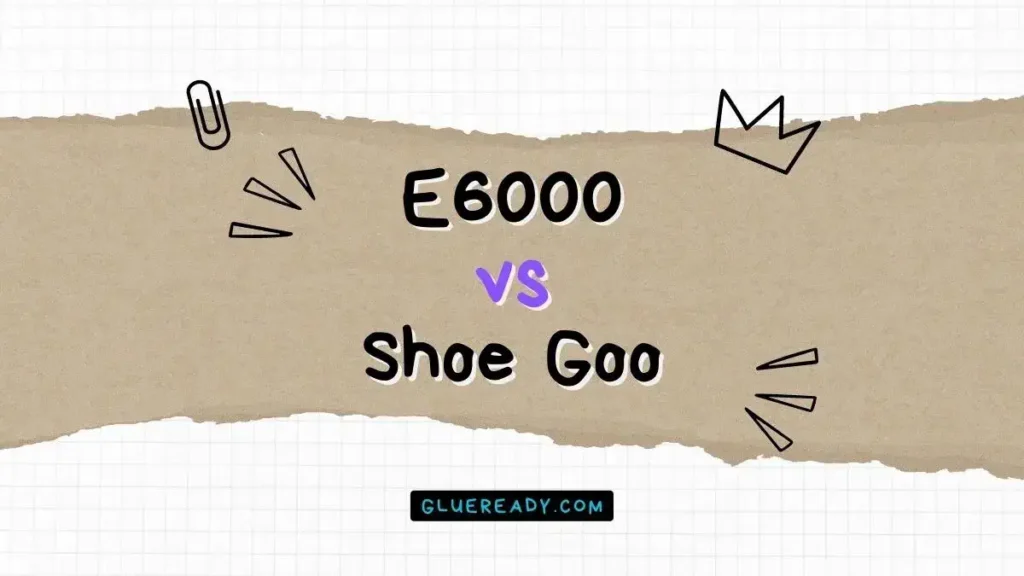GS Hypo Cement vs E6000 – Which One to Choose?

If you are a jewelry maker, you know how important it is to choose the right glue for your projects.
GS Hypo Cement and E6000 are both great glues for jewelry making.
GS Hypo Cement is the go-to option for tasks that require precision and delicacy, while E6000 is the go-to option for tasks that require versatility and durability.
The following article compares GS Hypo Cement vs E6000, two commonly used jewelry glues.
Read More: How To Make E6000 Glue Dry Faster?
What is GS Hypo Cement?
GS Hypo Cement is a special adhesive that was originally developed for precision watch repairs.
It is ideal for bonding delicate materials, such as beads, crystals, pearls, rhinestones, or watch parts.
It has a needlepoint applicator that allows for precise and mess-free application. It dries clear and does not damage the surface of the items.
It has a medium-strength bond that can be easily removed with acetone if needed.

Some Examples of Projects That Use GS Hypo Cement
GS Hypo Cement is best used for jewelry projects that involve delicate and intricate materials that need precision and care.
Some examples are:
- Gluing beads, crystals, pearls, rhinestones, or wire-to-metal settings or findings
- Gluing foil backs to metal settings
- Gluing cabochons to bezels
- Gluing knots or clasps to cord or thread
- Gluing charms or pendants to chains or cords
What is E6000 Glue?
E6000 is a high-performance industrial adhesive that can bond almost any material, such as metal, leather, fabric, glass, ceramic, rubber, wood, or plastic.
It is known for its flexibility, toughness, and superior bonding strength. It is also waterproof and paintable, making it suitable for outdoor projects.
It has a thick consistency and a strong chemical odor. It dries clear and forms a permanent bond that can withstand heat and chemicals.

Some Examples of Projects That Use E6000 Glue
E6000 Jewelry & Bead Glue is best used for jewelry projects that involve diverse and durable materials that need strength and flexibility.
Some examples are:
- Gluing glass, metal, fabric, wood, ceramic, leather, rubber, or plastic to each other
- Gluing buttons, brooches, pins, magnets, or clips to jewelry pieces
- Gluing embellishments or decorations to jewelry pieces
- Gluing jewelry pieces to other objects or surfaces
GS Hypo Cement vs E6000 Comparison Table
| Feature | GS Hypo Cement | E6000 Glue |
| Precision | High | Medium |
| Applicator | Needlepoint | Tube |
| Sets In | 20 minutes | 10 minutes |
| Fully Cured | 24 to 72 hours | 24 hours |
| Strength | Medium | High |
| Flexibility | Low | High |
| Odor | Low | High |
| Waterproof | No | Yes |
| Chemical Resistance | No | Yes |
| Ideal for | Delicate materials, such as rhinestones, beads, crystals, metal, glass, pearls, or plastic | Diverse or tough materials, such as metal, wood, glass, fabric, rubber, leather, ceramics, or plastic |
What Are the Differences Between GS Hypo Cement and E6000?
Based on the type of project you are working on, GS Hypo Cement and E6000 have different strengths and weaknesses.
Here are some of the main differences between them:
Strength
E6000 has a higher bonding strength than GS Hypo Cement, making it more durable and reliable for heavy-duty applications.
However, GS Hypo Cement has enough strength for most jewelry projects that don’t require extreme stress or pressure.
Precision
GS Hypo Cement has a higher precision than E6000, thanks to its needlepoint applicator that allows for accurate and controlled application.
E6000 can be messy and hard to apply in small areas or fine details.
Flexibility
E6000 has a higher flexibility than GS Hypo Cement, meaning it can bend and stretch without breaking or losing its bond. This makes it ideal for materials that move or change shape, such as fabric or leather.
GS Hypo Cement is more rigid and may crack if bent too much.

Outdoor Suitability
E6000 is more suitable for outdoor projects than GS Hypo Cement, because it is waterproof and resistant to heat and chemicals.
GS Hypo Cement may not withstand exposure to moisture or extreme temperatures.
Chemical Resistance
E6000 is more resistant to chemicals than GS Hypo Cement, meaning it won’t dissolve or weaken when exposed to solvents or cleaners.
GS Hypo Cement may react with some chemicals and lose its bond.
How to Choose Between GS Hypo Cement and E6000?
The choice between GS Hypo Cement and E6000 depends largely on your specific task and preferences.
Here are some questions to ask yourself before choosing an adhesive:
What materials are you bonding with?
If you are working with delicate materials that require precision and care, GS Hypo Cement may be a better option.
If you are working with diverse or tough materials that require versatility and strength, E6000 may be a better option.
How much flexibility do you need?
If you need an adhesive that can bend and stretch with your materials without cracking or breaking, E6000 may be a better option.
If you need an adhesive that can hold your materials firmly without moving or shifting, GS Hypo Cement may be a better option.
Where are you using the adhesive?
If you are using the adhesive indoors or in a well-ventilated area, either adhesive may work well.
If you are using the adhesive outdoors or in a humid environment, E6000 may be a better option as it is waterproof and resistant to weather conditions.
How fast do you need the adhesive to cure?
If you need an adhesive that can cure quickly and allow you to move on to the next step of your project, GS Hypo Cement may be a better option, as it can cure in minutes.
If you need an adhesive that can cure slowly and allow you to adjust or reposition your materials before setting, E6000 may be a better option, as it can take up to 24 hours to cure fully.
Frequently Asked Questions (FAQs)
What Is a Substitute For G-S Hypo Cement?
A possible substitute for G-S Hypo Cement is Aleene’s Jewelry and Metal Glue, which is also a clear-drying, medium-strength, non-brittle adhesive that works well with beads, metal, stone, ceramic, and plastic.
Another option is Dazzle Tac Jewelry Glue, which is also a clear-drying, flexible, and durable adhesive that works well with metal, gemstones, glass, plastics, bone, horn, fabrics, and leather.
However, both of these glues may not have the same precision as G-S Hypo Cement, which has a needlepoint applicator.
Is G-S Hypo Cement Strong?
G-S Hypo Cement is a medium-strength cement that was developed for watchmaking and jewelry repair industries.
It combines a fine precision tool with a clear-drying cement that will not craze plastic material or damage precious surfaces.
However, it is not as strong as some other adhesives, such as E6000 or epoxy, and it may not withstand extreme stress or pressure.
What Glue Is Better Than E6000?
It’s difficult to say which glue is definitively “better” than E6000, as it depends on the specific materials being bonded and the conditions of use.
However, some sources suggest that Gorilla Glue may be a stronger alternative to E6000 for certain applications, such as bonding metal.
There is no doubt that Gorilla Glue has a higher tensile strength than most E6000 products, at around 4250 PSI on average.
Ultimately, it’s important to consider the properties and uses of each adhesive to determine which one is the best fit for your project.
Read More: E6000 vs Gorilla Glue
Final Thoughts
GS Hypo Cement and E6000 are both excellent glues for different purposes.
GS Hypo Cement is the best choice for tasks that require precision and delicacy, while E6000 is the best choice for tasks that require versatility and durability.
It’s less about which glue is better overall and more about which glue is suitable for your specific project.
Hopefully, with this comparison between GS Hypo Cement vs E6000, you’re now equipped to make that decision confidently.






